NASA’s Psyche spacecraft is nearing the final stages of preparations for launch, and the mission team is working to confirm that all hardware and software systems are operating correctly. An issue is preventing confirmation that the software controlling the spacecraft is functioning as planned. The team is working to identify and correct the issue. To allow more time for this work, the launch period is being updated to no earlier than Sept. 20, 2022, pending range availability.
Month: May 2022
NASA’s BioExpt-1 Braced for Deep Space
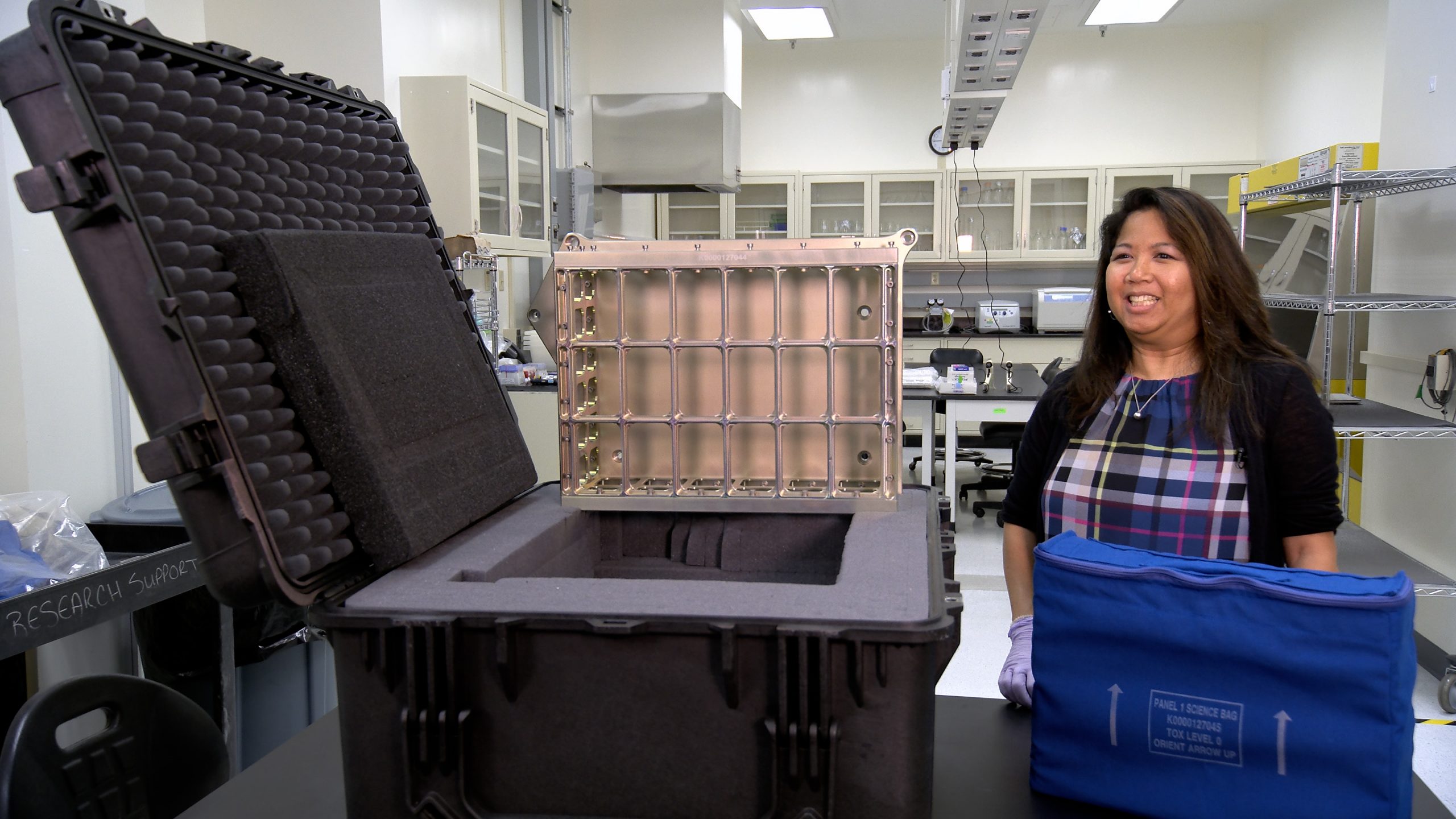
As NASA prepares to return to the Moon through Artemis, teams at the agency’s Kennedy Space Center in Florida are working to send much smaller life forms to space to help scientists better understand the effects of space radiation before humans return to the lunar surface.
A number of science experiments, including the agency’s Biology Experiment-1 (BioExpt-1), will be flying on board Artemis I – the mission that will test the agency’s Space Launch System (SLS) rocket and Orion as an integrated system before sending astronauts to the Moon.
NASA’s Space Biology Program selected four biology experiments to fly as part of BioExpt-1, which involves using plant seeds, fungi, yeast, and algae to study the effects of space radiation before sending humans to the Moon and, eventually, to Mars.
“Each of these four experiments will help us understand a unique aspect of how biological systems can adapt and thrive in deep space,” said Sharmila Bhattacharya, NASA program scientist for space biology. “Gathering information like this and analyzing it after flight will eventually help us paint the full picture of how we can help humans thrive in deep space.”
During Artemis I, Orion will travel more than 40,000 miles beyond the Moon, passing through the Van Allen Belts – areas beyond low-Earth orbit where cosmic radiation is trapped – and providing researchers with a true deep space environment for conducting these experiments.
“We don’t currently know what the effects of radiation are outside of low-Earth orbit and how that could affect our system and our biology,” said Dinah Dimapilis, NASA project manager. “I’m excited to see what we can learn from these experiments, to see us go back to the Moon, and to know that I get to be a part of all of this.”
The four experiments will be split into two science bags fabricated and assembled by personnel with the Test Operations and Support Contract at Kennedy. About three weeks before launch, each science bag will be carefully placed into container assemblies built by a team with the Florida spaceport’s Laboratory Support Services and Operations Contract and then secured to the backbone of Orion.
When Orion finishes its journey and splashes down in the Pacific Ocean, each of the experiments will be returned to the principal investigators for further study. Those principal investigators were awarded grants from NASA Biological and Physical Sciences, totaling approximately $1.6 million. The awardees are Federica Brandizzi, Ph.D., Michigan State University; Timothy Hammond, Ph.D., Institute for Medical Research, Inc.; Zheng Wang, Ph.D., Naval Research Laboratory; and Luis Zea, Ph.D., University of Colorado, Boulder.
Weather Forecast Improves for Today’s OFT-2 Launch
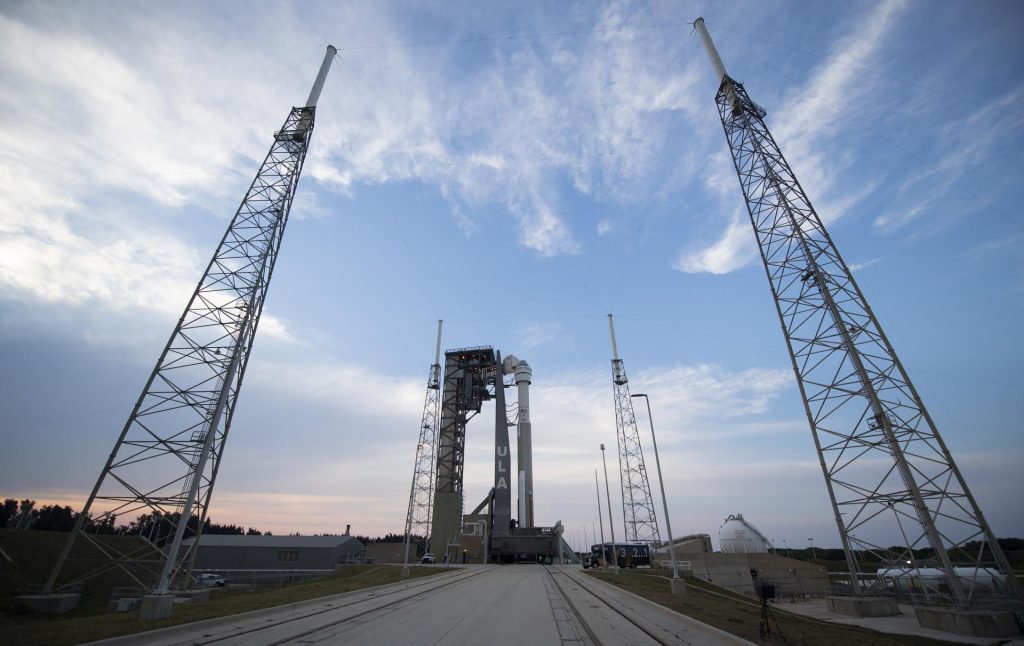
Meteorologists with the U.S. Space Force 45th Weather Squadron now predict an 80% chance of favorable weather for today’s uncrewed launch of NASA’s Boeing Orbital Flight Test-2 (OFT-2) to the International Space Station. Liftoff is scheduled for 6:54 p.m. EDT from Cape Canaveral Space Force Station in Florida.
The primary weather concerns for launch day are the cumulus and anvil cloud rules violations during the instantaneous launch window.
Boeing’s CST-100 Starliner spacecraft, atop a United Launch Alliance Atlas V rocket, will lift off from Space Launch Complex-41. Live launch coverage begins at 6 p.m. EDT on NASA TV, the NASA app, and the agency’s website.
NASA to Launch Small Satellites on Next SpaceX Cargo Mission
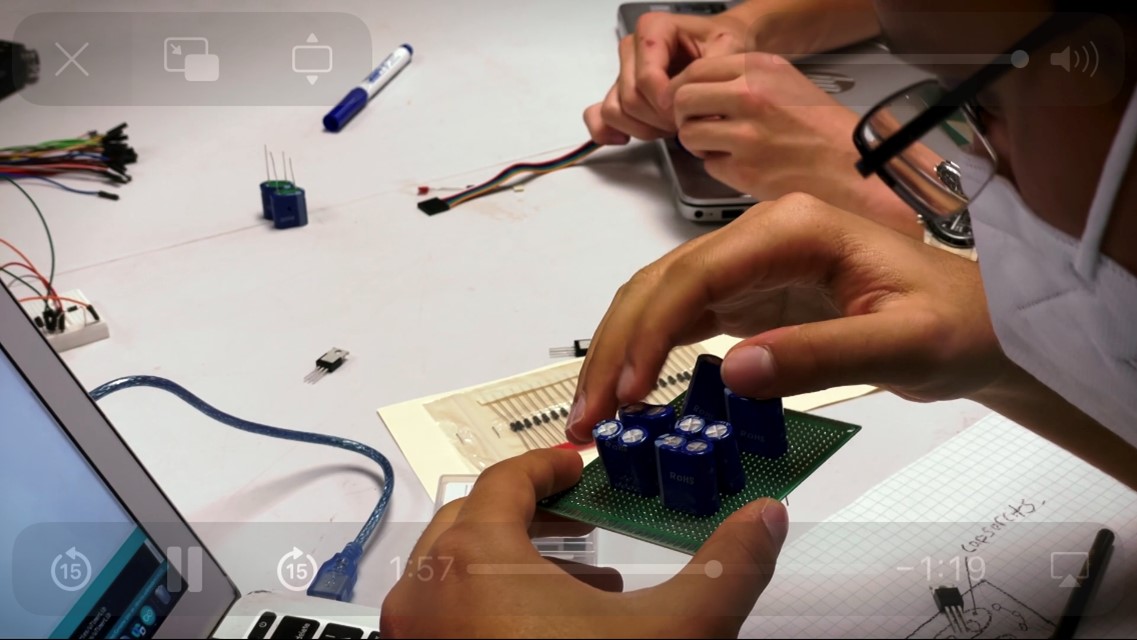
NASA’s Launch Services Program is preparing to send five CubeSats to the International Space Station as part of the ELaNa 45 (Educational Launch of Nanosatellites) mission aboard SpaceX’s 25th Commercial Resupply Services (CRS-25) mission for NASA. Liftoff is scheduled for June 7 from Launch Complex 39A at the agency’s Kennedy Space Center in Florida.
The small satellites were selected through NASA’s CubeSat Launch Initiative, which provides low-cost access to space for U.S. educational institutions, NASA centers, and others to develop and demonstrate novel technologies in space and to inspire and grow the next generation of scientists, engineers, and technologists.
The CubeSats were developed by the Massachusetts Institute of Technology; The Weiss School in Palm Beach Gardens, Florida; NASA’s Ames Research Center in Silicon Valley, California; Embry-Riddle Aeronautical University in Daytona Beach, Florida; and the University of South Alabama in Mobile. The CubeSats will be deployed from the space station.
NASA has selected over 200 CubeSat missions from more than 100 unique organizations representing 42 states, the District of Columbia, and Puerto Rico through the CubeSat Launch Initiative since 2010. To date, 134 CubeSat missions have launched into space through ELaNa rideshare opportunities.
Starliner Joins Atlas V at Space Launch Complex-41
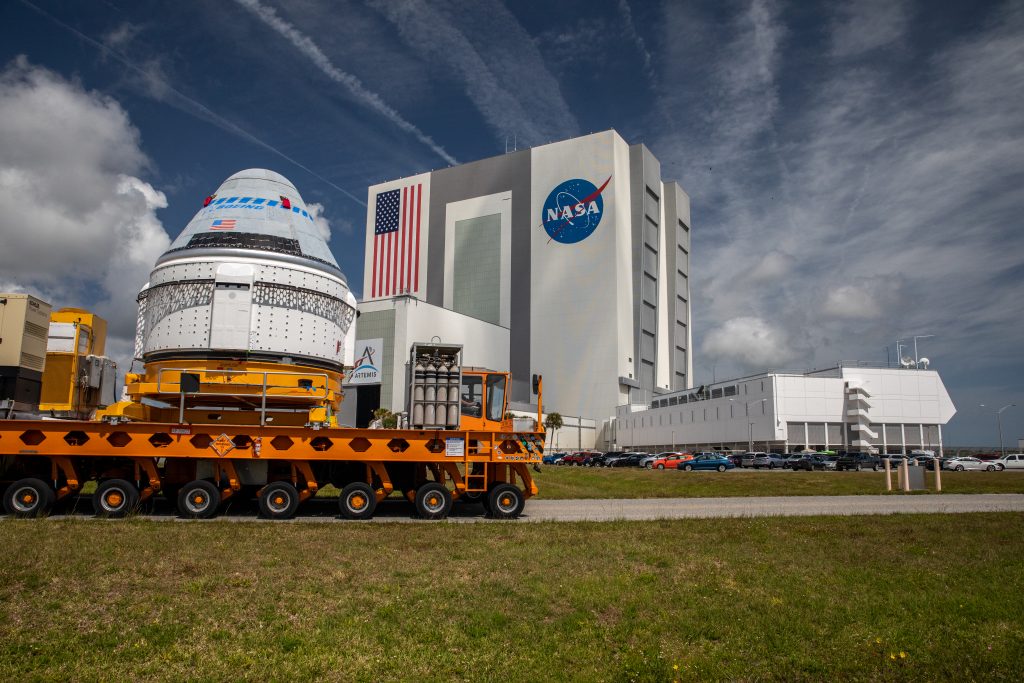
On Wednesday, May 4, Boeing’s CST-100 Starliner was joined with the rocket that will launch the spacecraft on its way to the International Space Station on an uncrewed flight test for NASA’s Commercial Crew Program.
During the operation, Starliner rolled out of the Commercial Crew and Cargo Processing Facility (C3PF) at NASA’s Kennedy Space Center in Florida and made its way to Space Launch Complex-41 (SLC-41) at Cape Canaveral Space Force Station in preparation for the company’s second uncrewed Orbital Flight Test (OFT-2)
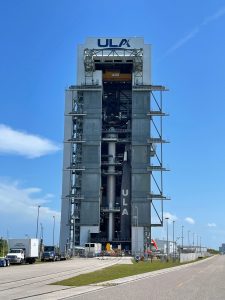
Starliner was raised and carefully placed onto the rocket and now is fully assembled and ready for an integrated systems test, a tip-to-tail electrical check of the 172-foot-tall Atlas V and Starliner stack.
OFT-2 is scheduled to launch Thursday, May 19, to demonstrate the system’s human transportation capabilities.
About 24 hours after launch, Starliner will rendezvous and dock to the space station and then return to Earth five to 10 days later. The test is the last flight before the Starliner system launches American astronauts on the Crew Flight Test (CFT) to the microgravity laboratory – the spacecraft’s first flight test with crew on board. Potential launch windows for CFT are under review and will be determined after a safe and successful OFT-2.
More details about the mission and NASA’s commercial crew program can be found by following the commercial crew blog, @commercial_crew on Twitter, and commercial crew on Facebook.
Media Invited to Joint Teleconference for Boeing’s Orbital Flight Test-2
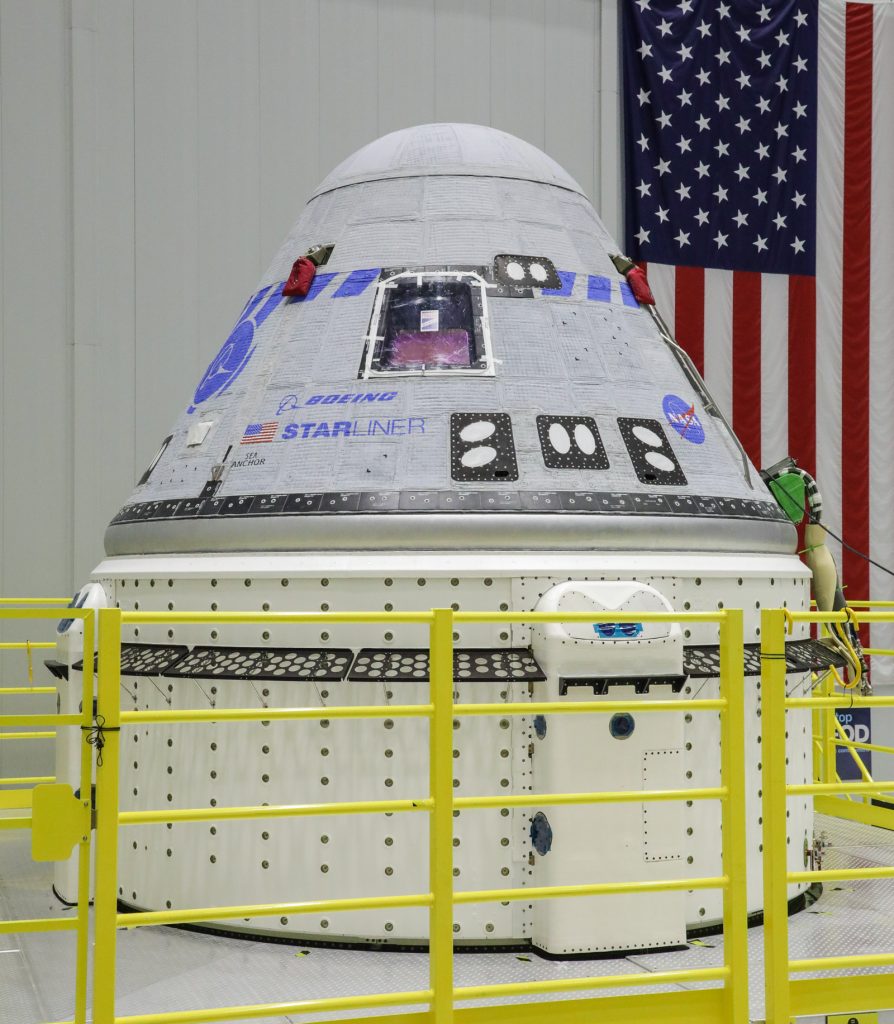
NASA and Boeing will hold a joint media teleconference at noon EDT on Tuesday, May 3, to discuss the agency’s Boeing Orbital Flight Test (OFT-2) mission and provide an update on spacecraft readiness.
The teleconference includes the following participants:
- Kathryn Lueders, associate administrator, Space Operations Mission Directorate, NASA Headquarters
- Steve Stich, manager, Commercial Crew Program, NASA’s Kennedy Space Center in Florida
- Joel Montalbano, manager, International Space Station Program, NASA’s Johnson Space Center in Houston
- Michelle Parker, vice president and deputy general manager, Space and Launch, Boeing
- Mark Nappi, vice president and program manager, CST-100 Starliner, Boeing
OFT-2 is scheduled to launch on Thursday, May 19, from Space Launch Complex-41 at Cape Canaveral Space Force Station in Florida. Boeing’s uncrewed CST-100 Starliner will launch atop a United Launch Alliance Atlas V rocket for its flight test to the International Space Station as part of NASA’s Commercial Crew Program.
Starliner is expected to arrive at the space station for docking about 24 hours later with more than 500 pounds of NASA cargo and crew supplies. After a successful docking, Starliner will spend five to 10 days aboard the orbiting laboratory before returning to Earth in the western United States. The spacecraft will return with nearly 600 pounds of cargo, including reusable Nitrogen Oxygen Recharge System (NORS) tanks that provide breathable air to station crew members.
Media wishing to participate in the OFT-2 mission overview news teleconference must RSVP by 11 a.m., Tuesday, May 3, by emailing the Kennedy newsroom at ksc-newsroom@mail.nasa.gov.
More details about the mission and NASA’s commercial crew program can be found by following the commercial crew blog, @commercial_crew and commercial crew on Facebook.
NASA’s Psyche Spacecraft Arrives at Kennedy
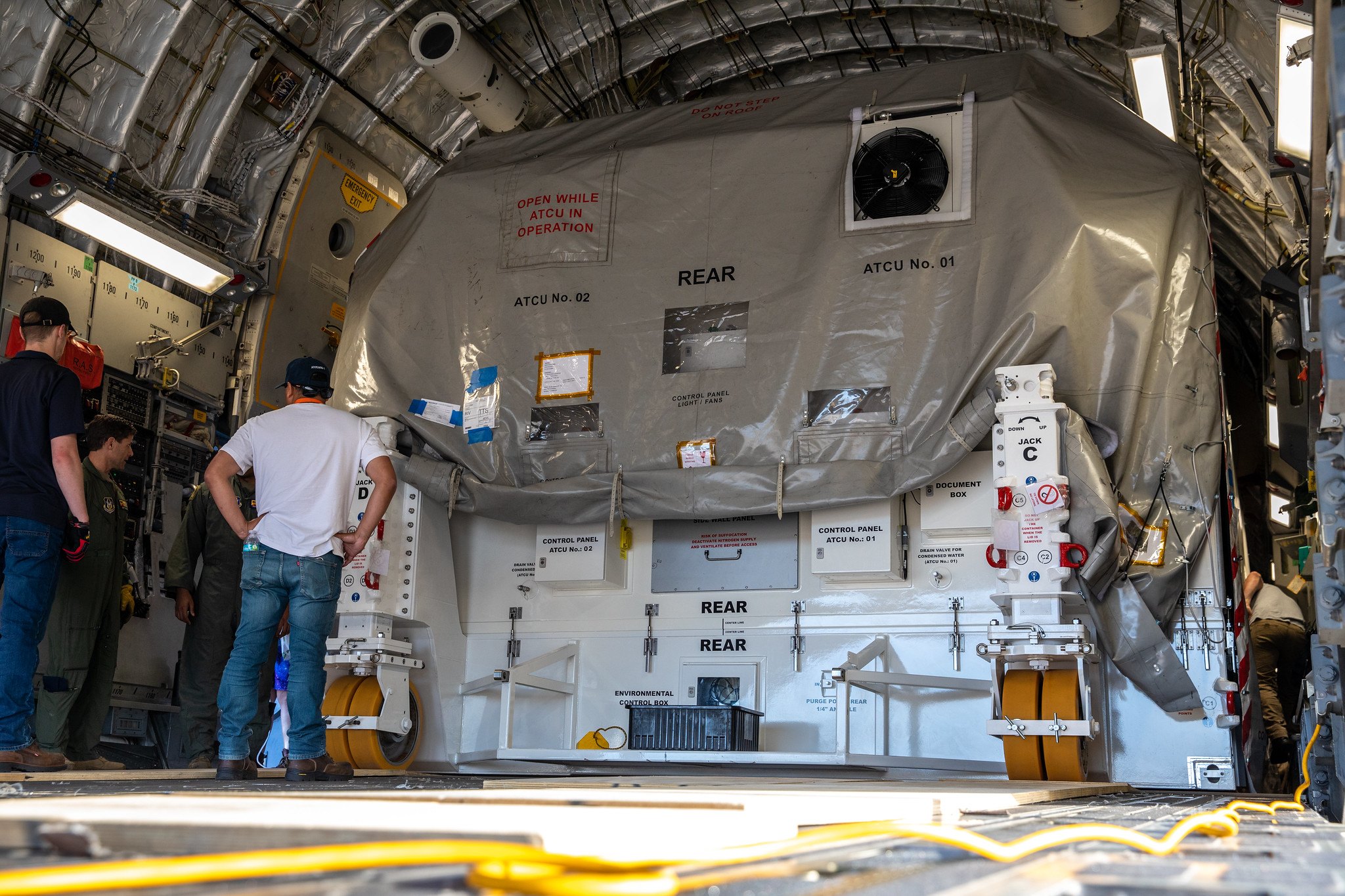
The Psyche spacecraft completed its journey from NASA’s Jet Propulsion Laboratory (JPL) in Southern California to NASA’s Kennedy Space Center in Florida. First, it traveled to March Air Reserve Base, about 55 miles southeast of JPL, before flying cross-country aboard a C-17 aircraft to the Launch and Landing Facility (formerly the Shuttle Landing Facility) where crews offloaded the spacecraft. Over the next three months, the spacecraft will undergo additional preparations before launching aboard a SpaceX Falcon Heavy rocket on Aug. 1.
The Psyche spacecraft will use solar-electric propulsion to travel approximately 1.5 billion miles (2.4 billion kilometers) to rendezvous with its namesake asteroid in 2026. This will make it the first spacecraft to use Hall-effect thrusters beyond the orbit of the Moon. This thruster technology traps electrons in a magnetic field and uses them to ionize onboard propellant, expending much less propellant than equivalent chemical rockets. Psyche also carries three scientific instruments: an imager, magnetometer, and a gamma ray and neutron spectrometer.
The unique, metal-rich Psyche asteroid may be part of the core of a planetesimal, a building block of rocky planets in our solar system. Learning more about the asteroid could tell us more about how our own planet formed and help answer fundamental questions about Earth’s own metal core and the formation of our solar system.
The launch of Psyche will include two secondary payloads, NASA’s Deep Space Optical Communications (DSOC) technical demonstration, which is attached to the spacecraft as a separate experiment and the Janus spacecraft. DSOC will perform the agency’s first demonstration of optical communications beyond the Earth-Moon system, and will use lasers to send data at a higher rate than typical spacecraft radio communications. Janus is two small spacecraft that will study two different binary asteroids (two asteroids that orbit each other) to understand the formation and evolution of these objects.
The Psyche mission is led by Arizona State University. JPL, which is managed for NASA by Caltech in Pasadena, California, is responsible for mission’s overall management, system engineering, integration and testing, and mission operations. Maxar Technologies in Palo Alto, California, provided the high-power solar electric propulsion spacecraft chassis. NASA’s Launch Services Program (LSP), based at Kennedy, is managing the launch. Psyche will be the 14th mission in the agency’s Discovery program and LSP’s 100th primary mission. Numerous international, university, and commercial partners are part of the Psyche team.
For more information check out the mission website.
